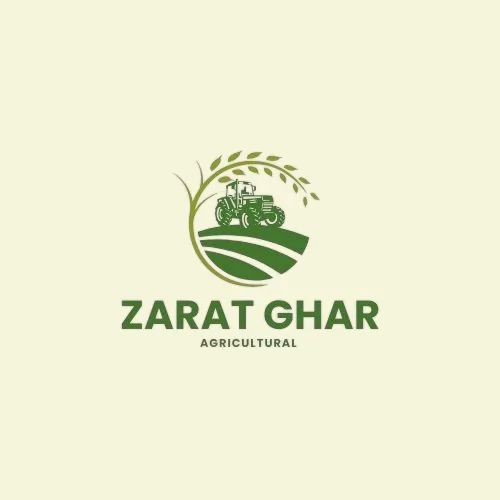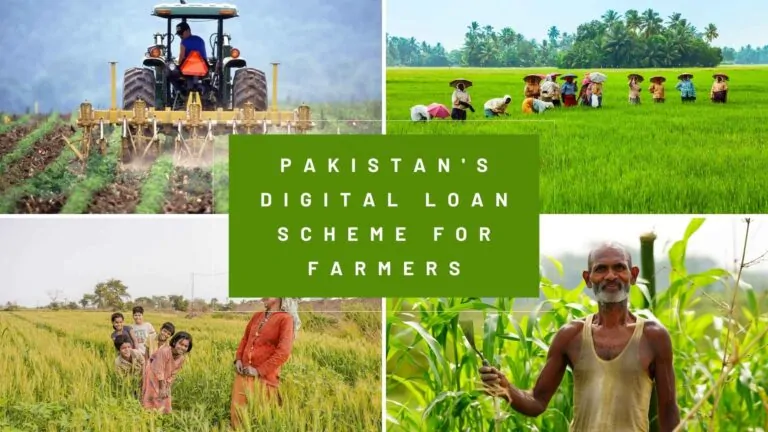Sindh Agricultural Income Tax 2025
On Monday, the provincial assembly approved a new framework that shifts levy from land to earnings and sets a top marginal rate of 45%.
The measure takes effect January 1, 2025 and asks farmers and firms to prepare for digital filing. Collection and enforcement move to the Sindh Revenue Board, with automated returns and payments to reduce discretion and boost transparency.
The plan protects lower earners with an annual exemption of Rs600,000 and applies the 45% rate above Rs5.6 million. A super tax adds up to 10% for very large payers over Rs500 million. Livestock stays outside the scope, while corporate farming is covered at differentiated company rates for small and large entities.
Today this marks a policy pivot tied to IMF-linked fiscal commitments and follows similar moves in other provinces. Stakeholders should ready records, update systems, and expect clearer, income-based assessments when the law begins.

Key Takeaways
- Assembly approved an income-based levy with a 45% top rate and Rs600,000 exemption.
- SRB will collect via automated filing to improve compliance and reduce discretion.
- Super tax up to 10% applies to earnings above Rs500 million; livestock excluded.
- Corporate farming enters the base with lower rates for small firms and higher for large companies.
- The change replaces the land-based advance levy and aligns with IMF-linked reforms.
- Farmers and agribusinesses should prepare records and digital systems before the effective date.
- Share guidance and updates on facebook twitter to stay informed.
Breaking update: Sindh Assembly approves agricultural income tax effective January 2025
Legislators passed legislation that moves farm revenue into the formal tax net, effective January 1, 2025.
The provincial assembly approved the bill after the cabinet approved the measure, chaired by Chief Minister Murad Ali Shah. The government frames this step as central to meeting IMF-linked fiscal commitments and to harmonize policy with other provinces.
Passage sets a hard start date of January 2025, compressing preparation time for large operators. Taxpayers with agricultural income should begin compiling records and reporting documents now to avoid compliance gaps.
The focus now shifts to rules, notifications, and the Sindh Revenue Board’s systems deployment. Early government communication will be essential to explain thresholds, rates, and exemptions and to reduce filing errors.
| Step | Responsible body | Immediate action |
|---|---|---|
| Finalize rules | Sindh cabinet & SRB | Publish notifications and guidelines |
| System setup | Sindh Revenue Board | Deploy automated filing and payment portals |
| Stakeholder outreach | Provincial government | Workshops and helplines for farmers and firms |
| Compliance window | Taxpayers | Prepare records, verify income streams |
The Sindh Agricultural Income Tax Bill 2025 at a glance
A new provincial bill rearranges farm levies into an income-based framework with clear thresholds and automated collection.
The cabinet, chaired by Chief Minister Murad Ali Shah, approved the measure before Parliamentary Affairs Minister Ziaul Hassan Lanjar introduced it in the assembly.
Key design: a progressive schedule with a floor exemption of Rs600,000, a top marginal rate of 45% above Rs5.6 million, and a super tax of up to 10% for incomes above Rs500 million.
The cabinet endorsed SRB-led administration and full automation for payments and filings. This removes the old advance levy tied to cultivated land and aligns assessments with actual receipts.
- The legislative path: ministerial introduction, cabinet nod, assembly passage, then rulemaking and notifications.
- The federal government encouraged timely passage as part of IMF-linked fiscal steps; other provinces moved similarly.
- The income tax bill targets farm revenue, excludes livestock, and brings corporate farming under company rates.

| Feature | Detail | Next step |
|---|---|---|
| Exemption | Rs600,000 annual floor | Public guidance material |
| Top rate | 45% above Rs5.6m | Rate schedules published |
| Administration | SRB automation for filing | Portal launch and testing |
Tax rates, slabs, and thresholds under the new law
Below is a concise guide to the slabs, exemptions, and additional levies that determine liabilities for farm revenue under the new framework.
Exemption and basic floor
Exemption: annual agricultural income up to Rs600,000 is tax‑free. This shield helps smallholders and aligns the base with ability to pay.
Marginal rates and top band
The standard progression leads to a top marginal rate of 45% on the portion of income above Rs5.6 million. Marginal rates apply only to the top slices of income, not the whole sum.
Super tax bands
An additional surtax begins at Rs150 million and phases up, reaching a cap of 10% for incomes above Rs500 million. This raises progressivity for ultra‑high earners.
| Income band (PKR) | Primary rate | Additional levy |
|---|---|---|
| Up to 600,000 | 0% | — |
| 600,001 – 5,600,000 | Progressive (lower bands) | — |
| Above 5,600,000 | 45% (top marginal) | Possible super tax |
| 150,000,000 – 500,000,000 | Company/individual rates apply | Phased super tax |
| Above 500,000,000 | As above | Up to 10% cap |
Administration: all slabs and payments will be processed via SRB’s automated filing and payment systems to ensure consistent application and timely processing.
- Example: only the portion above Rs5.6m faces 45%; earlier bands remain taxed at their rates.
- Guidance on loss carry‑forward and seasonal adjustments is expected in SRB notifications.
- Maintain sales and cost records to support declared income under the new tax agricultural regime.
Administration by Sindh Revenue Board, not FBR
The provincial board will hold responsibility for collection and implementation from January 1. This confirms provincial competence and aligns enforcement with constitutional jurisdiction.
SRB’s mandate for collection and implementation
The sindh revenue board will administer registrations, returns, and reconciliations. Officials say the board revenue model lets them tailor procedures to local needs.
Provincial autonomy and rejection of FBR collection
The government rejected federal collection on jurisdictional grounds. Leaders pointed to the sindh revenue body’s steady record in meeting targets as a key reason.
Automation of filing, payment, and collection for transparency
SRB will deploy end-to-end automation for account setup, e‑filing, and online payment. Real-time confirmations and audit trails aim to cut manual errors and curb rent‑seeking.
- Taxpayers will create accounts, prepare returns, and schedule payment through SRB portals.
- Payment gateways will support multiple instruments and instant receipts.
- Integration with provincial finance systems will speed revenue booking and tracking.
“Automation supports faster implementation and fairer treatment,”
Watch SRB notifications for formats, due dates, and transitional guidance before filings begin.
Federal-provincial context and IMF conditions
A national push tied to IMF conditions pressed provinces to bring farm revenue under formal rules. The federal government urged a coordinated response so each province would contribute to broader fiscal targets.
After federal prompting, KP and Punjab moved quickly and enacted their measures. Balochistan’s cabinet approved a similar plan before the final provincial step.
The sequence increased political and economic pressure on the remaining province to act. Officials balanced implementation concerns with the need to stay within national agreements.
Alignment with national fiscal agreements
The tax bill formed part of a coordinated package under IMF-linked reforms. Cabinet briefings and interprovincial talks focused on rates, exemptions, and administrative readiness.
- Coordination helped set consistent thresholds to reduce cross-border arbitrage for taxpayers.
- Provinces retained administrative autonomy while aligning key parameters to national benchmarks.
- Mobilizing revenue from previously under-collected sources aimed to narrow deficits and diversify revenue.
| Action | Responsible | Purpose |
|---|---|---|
| Policy alignment | Federal government & provincial cabinets | Meet IMF benchmarks |
| Technical coordination | Interprovincial finance panels | Harmonize rules and timelines |
| Administration | Provincial boards | Preserve autonomy in implementation |
Chief Minister Murad Ali Shah’s key statements
In a forceful statement, murad ali shah defended provincial collection and sharply criticized federal proposals. He called the FBR a “hotbed of corruption” and argued the provincial revenue body has met targets more reliably.
He rejected the claim that farming was untaxed, noting decades of provincial levies and enforcement. He stressed that water scarcity limits cultivable output, which affects taxable income in real terms.
Ali Shah said collection should remain local to ensure accountability and service quality. He urged that policy be growth‑sensitive so it supports productive activity rather than imposing undue burdens on producers.
“Transparency and automation will reduce corruption risks and build confidence in compliance,”
He added that provincial ministers and citizens regularly pay dues, using that example to stress fairness. His remarks tie directly to the new income-based design, exemptions, and progressive rates, and they help sustain political support for implementation.
Scope of the tax: what’s included and what’s excluded
This section clarifies which farm receipts fall inside the new levy and which activities remain outside its reach.
Covered activity: Crop sales, irrigation‑adjusted yields, and other farm receipts tied to cultivation are subject to the new rules. These streams must be reported through the SRB’s automated system under the income tax bill.
Excluded activities and system changes
Livestock operations are explicitly excluded. Producers who raise animals for sale will not be taxed under this measure. This exclusion limits disputes where herds drive turnover but not crop earnings.
The previous advance levy based on cultivated land has been removed. That shift ends a proxy approach that often penalized owners with low yields or water shortages.
- SRB automation requires clear income classification to separate crop receipts from excluded activity.
- Maintain invoices, sales ledgers, and cost records to support declared amounts.
- Special guidance will be issued for mixed operations to avoid misclassification.
| Item | Included? | Notes |
|---|---|---|
| Crop sales | Yes | Report net receipts and costs for assessment |
| Livestock sales | No | Excluded from this levy; keep separate records |
| Land‑based advance levy | No | Eliminated to reflect actual profitability |
| Mixed farm operations | Depends | SRB guidance will define apportionment rules |
“Accurate books will determine liability, not acreage alone.”
Corporate farming and company taxation
Corporate entities that run farms will now follow standard company rates, creating clearer rules for incorporated operators.
Small corporate farms will be subject to a 20% rate, while large firms face a 29% band. This aligns company-run operations with broader corporate rules and helps stakeholders model after‑tax returns.
Classification between small and large companies depends on statutory thresholds. Firms should verify their status early to avoid misapplication.
Compliance will require formal accounts, audited statements where required, and timely filings. The change affects the agriculture sector’s financial controls and reporting practices.
- Mixed revenue streams need clear allocation so declared income matches company accounts.
- Boards must strengthen governance and internal controls to meet audit standards.
- Finance teams should update charts of accounts and review withholding and installment rules to prevent penalties.
| Company size | Applicable rate | Key action |
|---|---|---|
| Small corporate farms | 20% | Confirm status; prepare financials |
| Large companies | 29% | Audit readiness; tax planning |
“Rate certainty helps firms plan investment and compliance,”
Engage advisors early to align corporate structures and reporting with the new income tax framework and avoid surprises.
Compliance expectations and taxpayer experience
Filing and payment processes will move online, reshaping how farm operators report earnings and meet obligations. The entire cycle is automated by the provincial revenue board, from registration to final settlement.
Transition from land-based to income-based assessment
The advance levy tied to cultivated land is removed. Taxpayers must now declare actual income with supporting documents.
That means sales records, input invoices, and proof of costs matter more than acreage. Accurate classification of each revenue stream will determine exemptions and rates.
Digital record-keeping and audit trail
Expect a clear end-to-end digital journey: account setup, e‑filing of returns, automated calculation of liability, and online payment confirmation.
Automation builds an auditable trail and reduces manual intervention. Electronic receipts give instant proof of compliance for lenders and partners.
- Forms & validation: Standardized templates and checks will guide submissions.
- Timelines: The revenue board will publish filing calendars, due dates, and penalties.
- Support: FAQs, helpdesks, and tutorials will assist filers during the transition.
- Good practice: Use digital bookkeeping tools and run periodic internal reviews to align accounts, bank records, and filings.
“A disciplined digital record keeps compliance simple and defensible.”
Impact on farmers, revenue, and the provincial economy
An income-focused levy ties payments to actual harvests and market prices rather than acreage. This shifts liability away from fixed land proxies and toward reported profits, which can better reflect year-to-year realities.
Balancing revenue needs with water and cultivation constraints
Water shortages limit planting and yields, a point Chief Minister Murad Ali Shah has stressed about his own family holdings. Low output in dry years reduces taxable receipts, so the exemption and progressive bands act as important buffers.
Broadening the tax base and equity considerations
Bringing more high earners into the formal net raises predictable revenue without unduly burdening smallholders. By aligning liability with the ability to pay, the change strengthens perceived fairness and can boost voluntary compliance across the sector.
- Income-based rules better handle volatile prices and yields than a fixed per-acre levy.
- Automation and clear guidance reduce administrative costs and help small producers adapt.
- Formal reporting may improve access to credit as documented figures replace informal estimates.
“Design must support productivity and not penalize households hit by weather,”
Overall, the move aims to balance fiscal needs with economic sustainability. The government can phase support tools—outreach, calculators, and transitional rules—to smooth the first filing cycle under the new agricultural income tax and income tax regime.
How Sindh compares with other provinces
A staggered rollout across provinces still produced a shared outcome: income-focused rules with provincial administration.
The two earlier provinces completed legislative passage before this province moved. KP and Punjab passed their measures first. Balochistan reached the cabinet approved stage prior to full assembly votes.
That sequence shows convergence. Each jurisdiction built similar exemptions and progressive bands while keeping administration local. This alignment strengthens delivery under broader fiscal commitments.
Where the peers align and differ
- Timelines: KP and Punjab legislated sooner; Balochistan used a cabinet route; this province followed with final approval.
- Design: All adopt income-based assessment and provincial collection, though rules and thresholds vary.
- Practical benefit: Harmonization reduces cross-border compliance headaches for firms operating in multiple provinces.
“Shared rules and shared learning will speed digital rollout and taxpayer education,”
| Province | Current status | Next step |
|---|---|---|
| KP | Passed assembly | Implement portals and guidance |
| Punjab | Passed assembly | Finalize rates and outreach |
| Balochistan | cabinet approved | Assembly confirmation and SRB setup |
| Sindh | sindh cabinet led approval | Publish notifications; begin automation |
Coordinated action across provinces completes a key piece of the national reform puzzle. Observers expect continued interprovincial forums to refine implementation of the new tax bill 2025.
Political reactions and governance implications
Political debate over the new bill quickly shifted from policy to questions of institutional trust.
The chief minister, murad ali, labeled the FBR a “hotbed of corruption” and argued provincial collection can be cleaner and more accountable.
The federal government pushed provinces to act under IMF-linked timelines, which intensified the exchange over who should administer collection and how.
Debate over performance and corruption claims
Critics say past failures at the federal level justify provincial control. Supporters of central collection warn about fragmentation and higher compliance costs.
- Governance point: Local automation and published metrics can boost trust.
- Sector impact: Farmers and firms need clear rules to maintain investment confidence.
- Oversight: Regular audits and transparency reports will help address integrity concerns.
Clear communication and legislative scrutiny are essential. Media attention can press authorities to raise service standards and protect taxpayers.
“Transparency, audits and timely data will determine whether this change improves collection and confidence.”
Revenue performance: SRB targets versus FBR critiques
Officials argue that a results-driven culture at the revenue board makes provincial administration preferable to federal control.
Chief Minister Murad Ali Shah points to a steady track record of collections as evidence the sindh revenue body meets its goals. That performance underpins the decision to retain collection locally.
Critics fault the FBR for weak enforcement and corruption in parts of the system. Provincial leaders used those critiques to explain why they rejected central collection despite federal pressure.
How performance becomes compliance: data-driven management, timely audits, and clear enforcement protocols can raise on-time filings and reduce leakages. Strong income documentation and online workflows should cut informal gaps.
- Key KPIs: on-time filing rates, payment compliance, audit cycle time, taxpayer satisfaction.
- Public dashboards and regular reports will help validate claims and build trust.
| Metric | Target | Purpose |
|---|---|---|
| On-time filing | 90% | Improve cash flow |
| Audit cycle | <90 days | Faster resolution |
| Payment compliance | 95% | Reduce arrears |
Early service wins and sector engagement—outreach, training, and helpdesks—will be critical to cement credibility under the bill 2025.
Sindh Agricultural Income Tax 2025
This new framework centralizes farm receipts under a single, income-based regime to improve fairness and clarity.
Core pillars: scope (crop receipts included; livestock excluded), an annual exemption of Rs600,000, progressive rates up to a 45% top band above Rs5.6 million, and a super tax that reaches 10% for very large payers above Rs500 million.
Administration & modernization: the provincial revenue board will run registration, automated filing, and online payments. Full automation aims to reduce errors and speed assessments.
Company treatment: incorporated farms follow company rates: 20% for smaller firms and 29% for larger companies. That aligns corporate farming with standard company rules and reporting obligations.
Benefits for compliant taxpayers include clearer rules, auditable digital records, and less ambiguity in assessments. Producers should consolidate books, invoices, and bank records and align accounting with e‑filing needs.
“Transparency, simple digital filings, and clear bands should ease compliance and improve equity.”
| Feature | Detail | Immediate action |
|---|---|---|
| Scope | Crop receipts in; livestock excluded | Classify revenue streams |
| Exemption & rates | Rs600,000 floor; 45% top marginal; up to 10% surtax | Estimate liabilities; plan cash flow |
| Administration | SRB-run portals and automated filing | Register and test accounts |
| Corporate farms | 20% (small), 29% (large) | Confirm company status; prepare audited statements |
- Further rules and technical guidance are expected before the first filing cycle.
- Industry bodies should circulate templates and best practices to help members comply.
- Today’s design aims to balance revenue needs with on‑farm realities and boost transparency.
Timeline: from cabinet nod to implementation on January 1, 2025
The routing from cabinet approval to live collections compresses technical and outreach tasks into a short window. Officials must finish rule publication, test portals, and confirm payment links before the implementation date.
Legislative milestones and next administrative steps
Legislative milestones
The provincial cabinet approved the bill before assembly passage, clearing the legal path for enactment. Final notifications and rulemaking must follow to give effect to the bill 2025.
Administrative actions
The revenue board will finalize e‑filing portals, integrate payment gateways, publish return forms, and release guidance materials. These steps must be validated through pilot tests and stakeholder walkthroughs.
Taxpayer readiness before filings commence
Readiness checklist
- Register on SRB systems and confirm account credentials.
- Compile sales records, bank statements, and expense invoices for declaration.
- Validate identity and bank details to enable online payment and electronic receipts.
- Corporate farms align closing calendars, controls, and audit plans to the new filing cadence.
| Milestone | Responsible | Immediate action |
|---|---|---|
| cabinet approved & assembly passage | sindh cabinet | Issue notifications and publish rules |
| Portal & payment setup | Revenue board | Integrate gateways; run user tests |
| Taxpayer outreach | Revenue board & industry bodies | Webinars, FAQs, helplines |
Practical notes: Restate the core rate architecture for planning: a 45% top marginal band above Rs5.6 million, a phased super tax up to 10% above Rs500 million, and an exemption up to Rs600,000. Early data validation and phased outreach will reduce errors and help the portal evolve during the initial filing season.
“Timely notifications and tested payment workflows are essential to avoid ambiguity at launch.”
Market snapshot and sentiment check
Trading on Aug 18 showed constructive breadth, with major benchmarks ending the day higher. The uptick signals pickup in risk appetite amid clearer policy signals and select corporate flows.
Index movers:
- KSE100 closed at 148,196 (+1,704.8; +1.16%).
- KSE30 finished 45,271 (+438.2; +0.98%).
- BR100 ended 15,111 (+148.5; +0.99%); BR30 rose to 42,697 (+618.6; +1.47%).
Selected tickers and sector highlights
The cement sector showed strength as DGKC jumped to 192.50 (+4.46%) and MLCF reached 89.75 (+4.42%). Such moves often reflect expectations for infrastructure activity.
Energy names also attracted flows: PPL gained to 184.09 (+2.59%) and HUBC moved to 160.50 (+1.04%).
Banking was mixed but steady: NBP at 147.01 (+0.10%) and BOP at 14.49 (+1.19%), signaling moderate liquidity and measured risk taking.
Utilities and gas stocks were dispersed: KEL rose to 5.18 (+2.37%), SNGP climbed to 118.70 (+1.43%), while SSGC eased to 41.38 (-0.93%).
PREMA stood out as a top gainer at 42.86 (+10.01%), suggesting company‑specific catalysts beyond broad index momentum.
“Policy clarity can help markets price risk more efficiently,”
Market implications: Today’s gains are constructive but not definitive. Continued follow‑through will depend on macro data and execution of fiscal reforms, including the new agricultural income tax, which may strengthen fiscal visibility and support valuations over time.
Investors will watch implementation milestones and revenue outcomes for signs of execution quality. Supply‑chain firms linked to agriculture may adjust as formal documentation and reporting take effect.
Conclusion
The move frames revenue collection around transparency, modern portals, and progressive rates for higher earners.
The new framework, effective January 1, is built on SRB automation, an Rs600,000 exemption, a 45% top band, and a super tax for the largest payers. Corporate farms face company rates while livestock stays excluded.
The chief minister, murad ali shah (also referenced as syed murad ali), stressed provincial administration and rejected federal collection to protect governance standards.
Successful rollout depends on timely rules, taxpayer education, and portal performance. Early compliance wins will build confidence and support revenue goals.
Follow official channels for updates and share guidance across networks like facebook twitter to help stakeholders prepare.
See Also;






